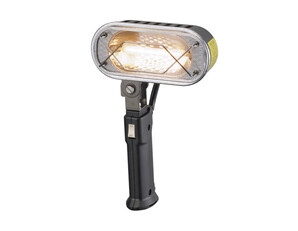- FE News»
- PPS News»
- Oct. 31, 2024
- [News Release R-1020] Release of "ECHELON Zen-Xero DYNAMIX”
- May. 15, 2024
- [News Release R-1019] Release of "ECHELON Ver.3.0”
- Oct. 02, 2023
- [News Release R-1018]Compound that achieves a genuine finish Full Renewal of “KATANA” Series
- Jun. 27, 2023
- [News Release] A final finishing compound that achieves a beautiful wet gloss. "KATANA DARK-SHOT" is Released.
- May. 22, 2023
- [News Release] Full renewal of buffing pad category Brand integrated into HAYABUSA
Iron Removers
Iron Removers
Iron dust is produced by car brakes, railroads, factory soot and smoke, ironworks welding, and cutting during road construction.
Iron dust can have adverse effects when it adheres to painted surfaces, glass, and wheels.
Harmful Effects of Iron Dust

Applying a wax or coating agent to a painted surface covered in iron dust will not result in a smooth finish. Because excess ingredients cannot be smoothly wiped off, the finish will suffer and the wax or coating will not perform its intended function. Also, the iron dust adhering to the painted surface will react with air and water, oxidizing and causing rust.
Dust and dirt in the air or rain will stick to the rust and cause water deposits, leading to the deterioration of the paint. As the paint deteriorates its luster will be reduced and the surface will become rough.
If iron dust adheres to glass surfaces in large amounts, wipers will not slide smoothly over the surface and water removal will become more difficult. In areas on the side windows or front and rear windshields where the wipers do not reach, water will stick to the iron dust and droplets will not be shed as easily. Furthermore, droplets remaining on glass surfaces will become rain spots which adversely affect visibility.
If a painted surface is polished without first removing iron dust, it will not yield a cleanly polished surface—the compound will stick to and pick up the iron dust, causing rolling scratches and failing to deliver a smooth finish.
For details on how to remove iron dust, click here
Iron Removers product list
Iron dust is produced by car brakes, railroads, factory soot and smoke, ironworks welding, and cutting during road construction.
Iron dust can have adverse effects when it adheres to painted surfaces, glass, and wheels.
Harmful Effects of Iron Dust

Applying a wax or coating agent to a painted surface covered in iron dust will not result in a smooth finish. Because excess ingredients cannot be smoothly wiped off, the finish will suffer and the wax or coating will not perform its intended function. Also, the iron dust adhering to the painted surface will react with air and water, oxidizing and causing rust.
Dust and dirt in the air or rain will stick to the rust and cause water deposits, leading to the deterioration of the paint. As the paint deteriorates its luster will be reduced and the surface will become rough.
If iron dust adheres to glass surfaces in large amounts, wipers will not slide smoothly over the surface and water removal will become more difficult. In areas on the side windows or front and rear windshields where the wipers do not reach, water will stick to the iron dust and droplets will not be shed as easily. Furthermore, droplets remaining on glass surfaces will become rain spots which adversely affect visibility.
If a painted surface is polished without first removing iron dust, it will not yield a cleanly polished surface—the compound will stick to and pick up the iron dust, causing rolling scratches and failing to deliver a smooth finish.
For details on how to remove iron dust, click here
Iron Removers product list
| Number of results:5 | 1 - 5 |
|---|
| Number of results:5 | 1 - 5 |
|---|




























































